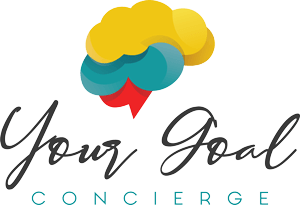Is Your Purpose Outdated? When and Why to Update Your Mission & Vision
Erica Kesse
In today's rapidly evolving global environment, the relevance and effectiveness of your mission and vision statements are not static. They are living documents that must evolve in response to internal shifts and external pressures. Failing to adapt can lead to misaligned teams, confused branding, and missed opportunities.
Why Evolution is Imperative Updating your mission, vision, and values is an ongoing process essential for keeping them effective and relevant. These statements must continuously align with your company's goals and market positioning, reflecting emerging trends and shifts in customer expectations. This dynamic relevance is critical for maintaining a competitive advantage in a volatile world.
Key Triggers for Review and Revision: Several external factors necessitate regular review and potential revision of your foundational statements:
- Technological Advancements: Rapid developments, such as Artificial Intelligence (AI), can fundamentally reshape business operations and customer interactions, requiring a re-evaluation of your purpose and future aspirations.
- Shifting Consumer Behaviors: Changes in how consumers purchase, interact with brands, and what they value can significantly impact your company's relevance and market approach.
- Societal Changes: Broader societal shifts, including the rise of remote work, increased focus on sustainability, and greater emphasis on diversity, equity, and inclusion (DEI), influence both employee expectations and customer needs.
- Internal Performance/Growth: Significant growth or decline, the introduction of new product lines, or mergers and acquisitions can necessitate a re-evaluation of your core purpose and strategic direction.
- Market/Competitive Landscape: The emergence of new competitors, industry disruption, or changes in regulations demand strategic adaptation for sustained competitive advantage.
The Renewal Process: A Step-by-Step Guide A structured and inclusive process is essential for effectively reviewing and updating your statements:
- Analyze Your Current Position: Conduct a thorough situational analysis, including a SWOT analysis (Strengths, Weaknesses, Opportunities, Threats), gathering input from stakeholders, customer feedback, and market performance reports.[8] Ask: Do these statements reflect who we are today and where we want to go?
- Design and Communicate the Revision Plan: Establish an intentional and inclusive review process, determining which components are open for adaptation and clearly defining the timeline and resources needed. Inform your team about the process, who will be involved, and how decisions will be made.
- Re-envision and Refine: Begin with an open conversation about what should be true for your organization's mission, vision, and values. Clarify your core purpose, define your long-term value proposition, and set an aspirational vision, avoiding jargon and focusing on clarity and emotional impact.
- Implement and Align: Integrate the updated statements throughout the organization. Review strategic goals, align departmental objectives (e.g., marketing, HR, operations), and use frameworks like OKRs to track progress.[8] Proactively communicate any significant changes and their intentionality.
- Monitor and Review Regularly: This is an ongoing commitment. Regularly evaluate the impact of the updated statements by monitoring key metrics like customer satisfaction, employee engagement, and market performance to ensure continued effectiveness and relevance.
By proactively adapting your mission and vision, your organization can remain agile, relevant, and well-positioned for sustained growth and success in an ever-changing world.



